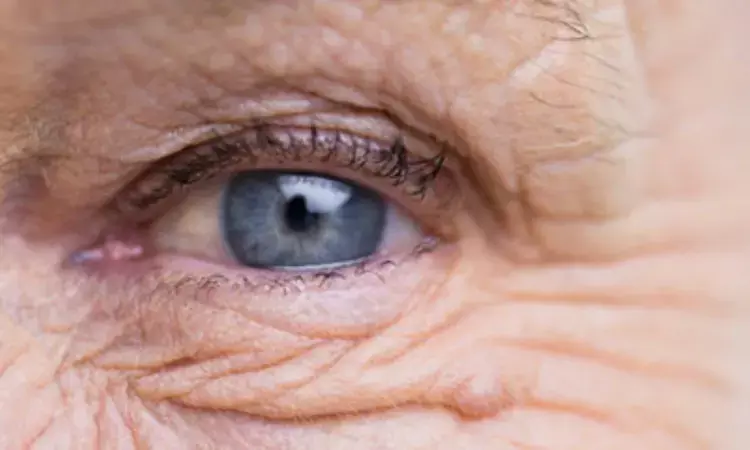- Home
- Medical news & Guidelines
- Anesthesiology
- Cardiology and CTVS
- Critical Care
- Dentistry
- Dermatology
- Diabetes and Endocrinology
- ENT
- Gastroenterology
- Medicine
- Nephrology
- Neurology
- Obstretics-Gynaecology
- Oncology
- Ophthalmology
- Orthopaedics
- Pediatrics-Neonatology
- Psychiatry
- Pulmonology
- Radiology
- Surgery
- Urology
- Laboratory Medicine
- Diet
- Nursing
- Paramedical
- Physiotherapy
- Health news
- Fact Check
- Bone Health Fact Check
- Brain Health Fact Check
- Cancer Related Fact Check
- Child Care Fact Check
- Dental and oral health fact check
- Diabetes and metabolic health fact check
- Diet and Nutrition Fact Check
- Eye and ENT Care Fact Check
- Fitness fact check
- Gut health fact check
- Heart health fact check
- Kidney health fact check
- Medical education fact check
- Men's health fact check
- Respiratory fact check
- Skin and hair care fact check
- Vaccine and Immunization fact check
- Women's health fact check
- AYUSH
- State News
- Andaman and Nicobar Islands
- Andhra Pradesh
- Arunachal Pradesh
- Assam
- Bihar
- Chandigarh
- Chattisgarh
- Dadra and Nagar Haveli
- Daman and Diu
- Delhi
- Goa
- Gujarat
- Haryana
- Himachal Pradesh
- Jammu & Kashmir
- Jharkhand
- Karnataka
- Kerala
- Ladakh
- Lakshadweep
- Madhya Pradesh
- Maharashtra
- Manipur
- Meghalaya
- Mizoram
- Nagaland
- Odisha
- Puducherry
- Punjab
- Rajasthan
- Sikkim
- Tamil Nadu
- Telangana
- Tripura
- Uttar Pradesh
- Uttrakhand
- West Bengal
- Medical Education
- Industry
Diabetic macular ischemia on OCTA predicts DME formation, DR progression and acuity deterioration: JAMA

The appearance of diabetic macular ischemia (DMI) in optical coherence tomography angiography (OCTA) images is predictive of diabetic retinopathy (DR) progression, diabetic macular edema (DME) formation, and visual acuity (VA) deterioration, says an article published in JAMA Ophthalmology.
An OCTA-based DMI evaluation may help to further improve the management of diabetic retinopathy since the presence of diabetic macular ischemia on optical coherence tomography angiography pictures predicts the progression of diabetic retinal disease and impairment of visual acuity. In order to determine if an automated binary DMI method employing OCTA pictures gives predictive value on DR advancement, diabetic macular edema formation, and VA degradation in a cohort of patients with diabetes, Dawei Yang and colleagues conducted this study.
An earlier deep learning method was used in this cohort research to measure the DMI of superficial capillary plexus and deep capillary plexus OCTA pictures. The lack of DMI was defined as images showing an intact contour of the fovea avascular zone and a normal distribution of the vasculature. The presence of DMI was described as images showing disruption of the fovea avascular zone together with or without other regions of capillary loss. Starting in July 2015, diabetic patients were enrolled, and they underwent at least four years of follow-up. The relationship between the existence of DMI and the development of DR, DME, and VA was examined using Cox proportional hazards models. The study was conducted between June and December 2022.
The key findings of this study were:
178 patients' eyes, totaling 321, were included in the analysis.
A median (IQR) follow-up of 50.41 (48.16-56.48) months revealed that 68 eyes (21.18%) had VA deterioration, 33 eyes (10.28%) had DME, and 105 eyes (32.71%) had DR advancement.
After adjusting for age, diabetes duration, fasting glucose, glycated haemoglobin, mean arterial blood pressure, DR severity, ganglion cell-inner plexiform layer thickness, axial length, and smoking at baseline, presence of superficial capillary plexus-DMI and deep capillary plexus-DMI were significantly associated with DR progression, whereas presence of deep capillary plexus-DMI was also associated with DME development and VA deterioration.
Reference:
Yang, D., Tang, Z., Ran, A., Nguyen, T. X., Szeto, S., Chan, J., Wong, C. Y. K., Hui, V., Tsang, K., Chan, C. K. M., Tham, C. C., Sivaprasad, S., Lai, T. Y. Y., & Cheung, C. Y. (2023). Assessment of Parafoveal Diabetic Macular Ischemia on Optical Coherence Tomography Angiography Images to Predict Diabetic Retinal Disease Progression and Visual Acuity Deterioration. In JAMA Ophthalmology. American Medical Association (AMA). https://doi.org/10.1001/jamaophthalmol.2023.1821
Neuroscience Masters graduate
Jacinthlyn Sylvia, a Neuroscience Master's graduate from Chennai has worked extensively in deciphering the neurobiology of cognition and motor control in aging. She also has spread-out exposure to Neurosurgery from her Bachelor’s. She is currently involved in active Neuro-Oncology research. She is an upcoming neuroscientist with a fiery passion for writing. Her news cover at Medical Dialogues feature recent discoveries and updates from the healthcare and biomedical research fields. She can be reached at editorial@medicaldialogues.in
Dr Kamal Kant Kohli-MBBS, DTCD- a chest specialist with more than 30 years of practice and a flair for writing clinical articles, Dr Kamal Kant Kohli joined Medical Dialogues as a Chief Editor of Medical News. Besides writing articles, as an editor, he proofreads and verifies all the medical content published on Medical Dialogues including those coming from journals, studies,medical conferences,guidelines etc. Email: drkohli@medicaldialogues.in. Contact no. 011-43720751


